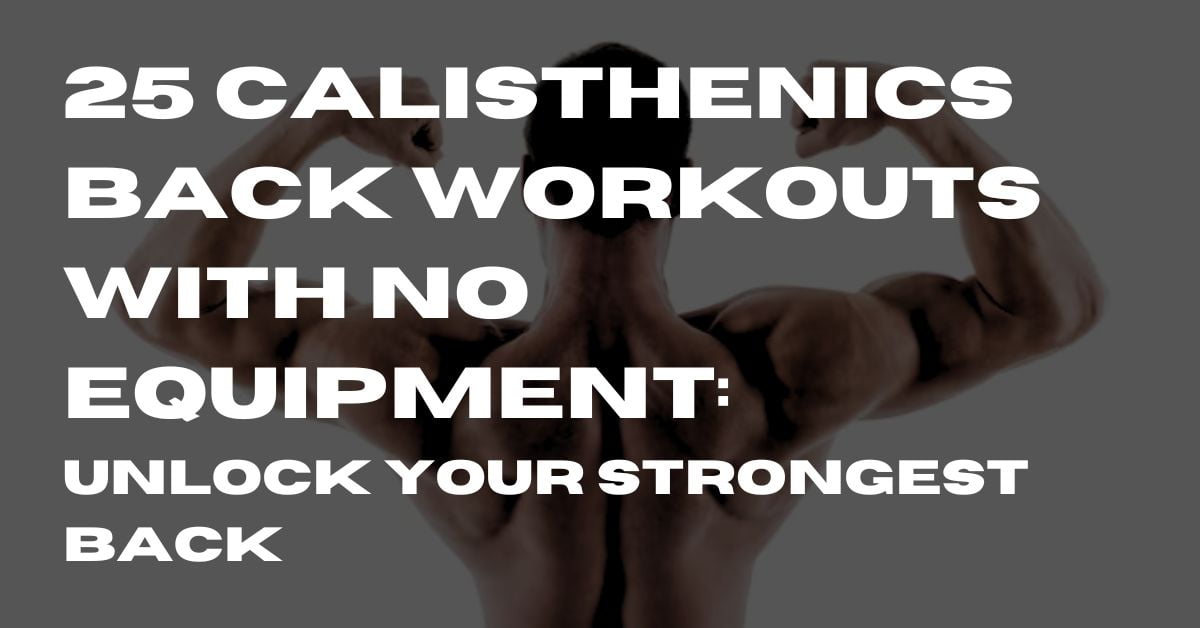Do you find the hassle of hauling heavy weights and complex gym equipment a burden when all you want is a more robust back?
Well, what if I informed you that you can craft a powerful and finely sculpted back without the need for fancy gear or barbells?
Welcome to the realm of bodyweight mastery – our collection of 25 Calisthenics Back Workouts that demand no equipment whatsoever.
Whether you’re a fitness enthusiast or just embarking on your wellness journey, these routines offer your passport to a resilient back and enhanced posture.
Let’s plunge into the thrilling universe of bodyweight workouts and explore how you can attain a back that’s both formidable and aesthetically pleasing.
Table of Contents
Understanding the World of Calisthenics
What Exactly is Calisthenics?
Calisthenics, often hailed as the art of shaping a powerhouse physique solely through the use of your own body, represents the fitness revolution you’ve long awaited.
It’s a training methodology that relies exclusively on bodyweight movements to foster strength, flexibility, and endurance.
Picture yourself engaging in exercises such as push-ups, pull-ups, squats, and planks(Calisthenics PPL Split) – all meticulously designed to harness your body’s weight as a form of resistance.
This is fitness in its purest form, where your body becomes the ultimate exercise equipment.
Calisthenics isn’t just a workout; it’s a way of life that champions functional strength, agility, and grace. Ready to embark on the journey of bodyweight workout wonders?
Let’s dive right in!
For a deeper understanding of calisthenics and its benefits, consider consulting reputable sources such as the American Council on Exercise (ACE) or the National Institute on Aging (NIA).
They offer valuable insights into the science and practice of calisthenics, aiding in your comprehension of its profound impact on your fitness expedition.
Advantages of Calisthenics
Get ready for a fitness approach that packs a powerful punch, offering an array of benefits that extend beyond mere muscle building.
Heightened Functional Strength:
Calisthenics isn’t about showcasing bulging biceps or sculpted abs (although they often come as a delightful bonus).
It’s about cultivating strength that’s practical for everyday life.
A study featured in the “Journal of Strength and Conditioning Research” reveals that calisthenics exercises significantly enhance functional strength, making daily tasks more manageable and reducing the risk of injuries.
Enhanced Flexibility:
The graceful movements within calisthenics routines promote flexibility, contributing to injury prevention and improved posture.
Research published in “The Journal of Sports Medicine and Physical Fitness” affirms that regular calisthenics training boosts flexibility in both upper and lower body muscles.
Balanced Muscle Development:
Unlike conventional weightlifting, calisthenics engages multiple muscle groups simultaneously, resulting in a harmonious development of muscles.
An all-around physique not only appeals aesthetically but also supports peak performance in sports and everyday activities.
Weight Management:
Calisthenics workouts are renowned for torching calories and shedding excess fat.
According to research in “Applied Physiology, Nutrition, and Metabolism,” high-intensity calisthenics can significantly elevate post-exercise calorie expenditure, making it an effective tool for managing weight.
Minimal Equipment, Maximum Convenience:
One of the most appealing aspects of calisthenics is its accessibility.
You don’t require costly gym memberships or bulky equipment; all you need is your body and a willingness to put in the effort.
A review in the “International Journal of Environmental Research and Public Health” even underscores the eco-friendliness of calisthenics, as it necessitates no additional equipment production.
Injury Prevention:
Calisthenics encourages proper form and controlled movements, reducing the risk of injuries commonly associated with traditional weightlifting.
Researchers in the “American Journal of Sports Medicine” have highlighted calisthenics as a safer alternative for individuals prone to injuries.
Mental Well-being:
Beyond its physical benefits, calisthenics exerts a profound influence on mental health.
Engaging in regular bodyweight workouts releases endorphins, reducing stress levels and enhancing overall mood.
Research published in “Psychosomatic Medicine” underscores the positive correlation between exercise and mental well-being.
Why Opt for Calisthenics for Your Back?
This is a question worth exploring, and the answer lies in the simplicity and efficacy of this bodyweight workout approach.
- Versatility: Calisthenics offers an extensive range of exercises that target different muscles in your back. Whether you aim to strengthen the upper, middle, or lower back, there’s a calisthenics exercise tailored to your objectives.
- No Equipment Required: Say goodbye to intimidating gym machinery and heavy weights. Calisthenics relies solely on your body, making it incredibly convenient and budget-friendly.
- Functional Strength: Calisthenics exercises replicate real-life movements. By fortifying your back through calisthenics, you’re not merely building muscle; you’re enhancing your capability to perform everyday tasks with ease.
- Bodyweight Magic: In contrast to traditional weightlifting, which often isolates specific muscle groups, calisthenics promotes comprehensive muscle engagement. This approach assists you in achieving a well-rounded, harmonious back.
- Anytime, Anywhere: The beauty of calisthenics lies in its flexibility. You can perform these workouts wherever you are, whether at home, in the park, or during your travels. No fancy gym or equipment is needed.
- Comfort Zone: For those who may feel self-conscious in a gym setting, calisthenics enables you to exercise comfortably in your own space, at your own pace.
- Injury Prevention: Calisthenics emphasizes proper form and controlled movements, lowering the risk of injuries commonly associated with heavy weights.
25 Calisthenics Back Workouts You Can Do Without Equipment
1. Superman:
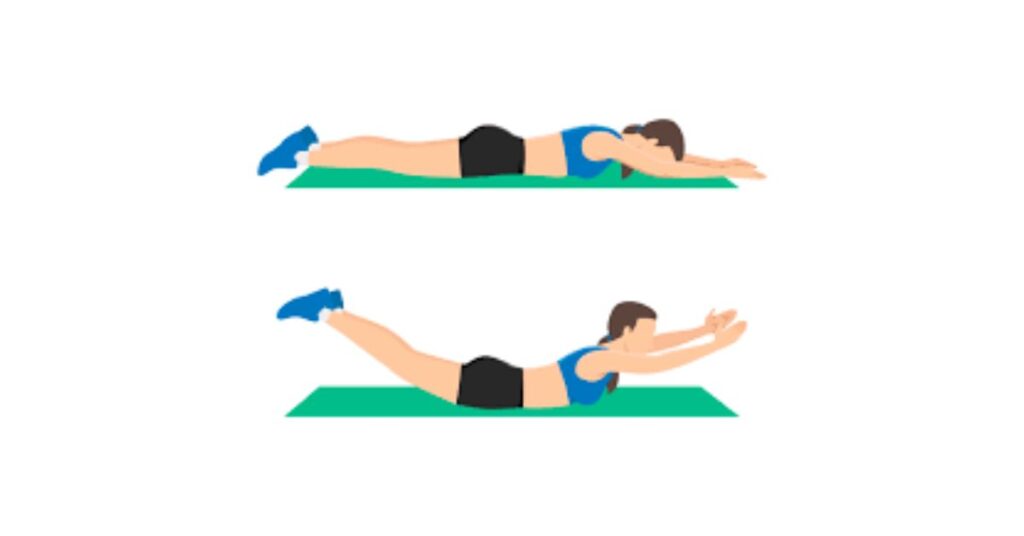
Steps:
- Lie face down on the floor with arms extended overhead.
- Lift your arms and legs simultaneously, keeping your core engaged.
- Hold for a few seconds, then lower back down.
Benefits:
- Strengthens lower back and glutes.
- Improves posture.
2. Bird-Dog:

Steps:
- Start on your hands and knees.
- Extend one arm and the opposite leg simultaneously.
- Hold for a moment, then return to the starting position.
Benefits:
- Enhances core stability.
- Improves balance and coordination.
3. Plank:
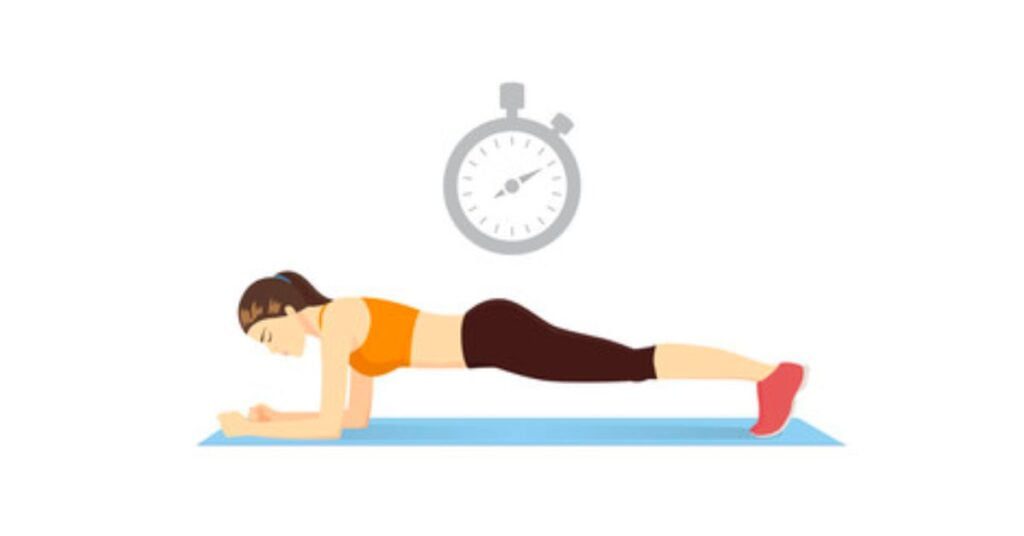
Steps:
- Get into a push-up position but with your weight on your forearms.
- Keep your body in a straight line from head to heels, engaging your core.
- Hold for as long as you can.
Benefits:
- Strengthens the entire core.
- Tones shoulders and back muscles.
4. Cobra Stretch:
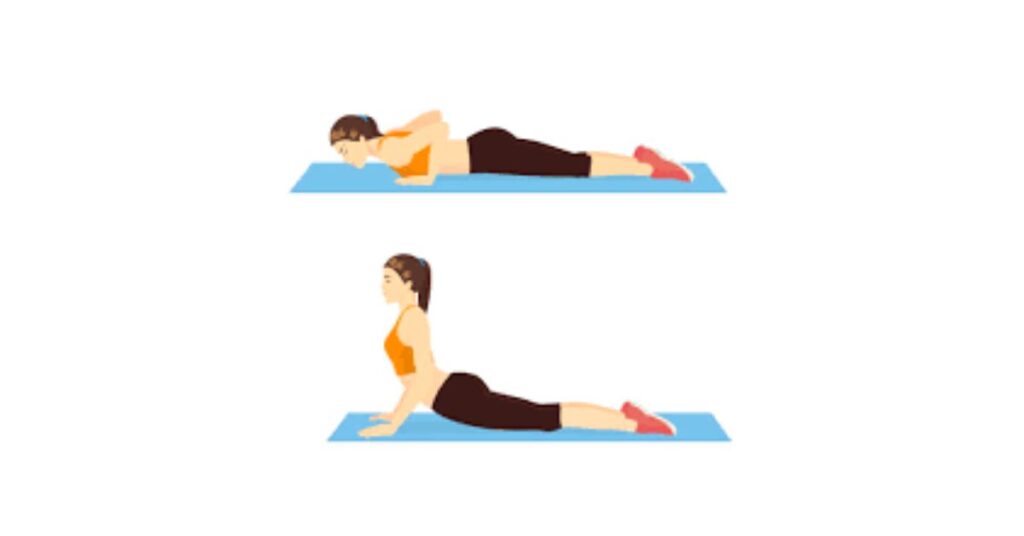
Steps:
- Lie face down, palms near your shoulders.
- Push your upper body up, arching your back.
- Hold briefly, then lower back down.
Benefits:
- Stretches the front torso and strengthens the back.
- May alleviate lower back pain.
5. Reverse Snow Angels:
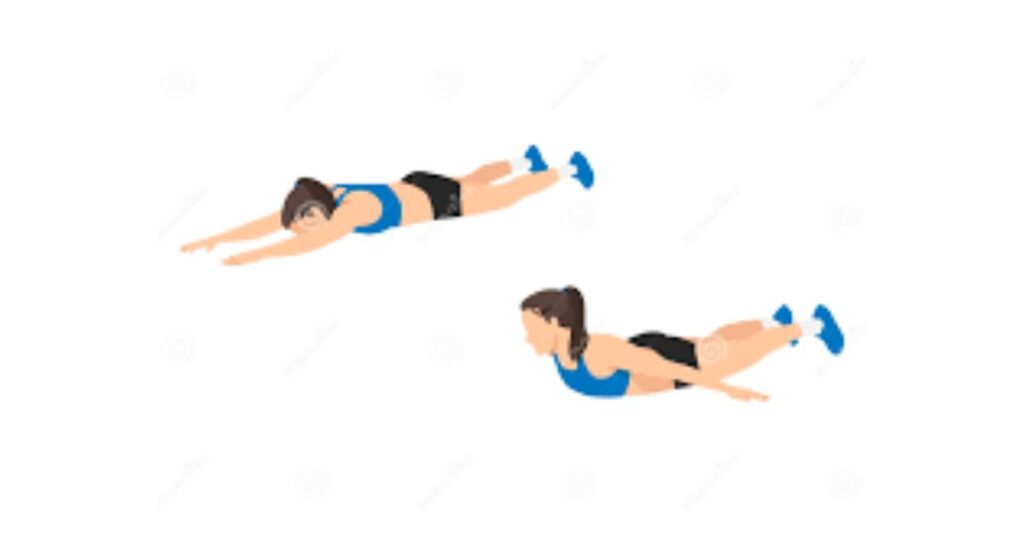
Steps:
- Lie face down with arms extended forward.
- Lift arms and legs, then make a snow angel motion.
- Lower back down.
Benefits:
- Activates multiple back muscles.
- Enhances shoulder mobility.
6. Body Rows:
Steps:
- Find a sturdy horizontal bar (e.g., a table edge).
- Lie underneath, grip the bar, and pull your chest toward it.
- Lower yourself back down.
Benefits:
- Strengthens upper back and biceps.
- Improves grip strength.
7. Cat-Cow Stretch:
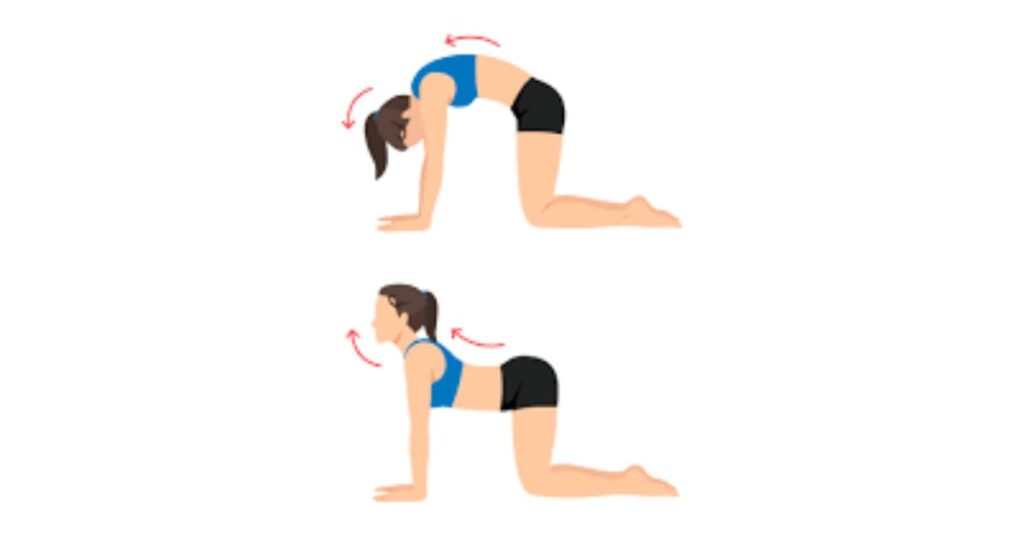
Steps:
- Start on hands and knees.
- Arch your back (cow) and then round it (cat) alternately.
Benefits:
- Increases spinal flexibility.
- Relieves tension in the back and neck.
8. Bridge:
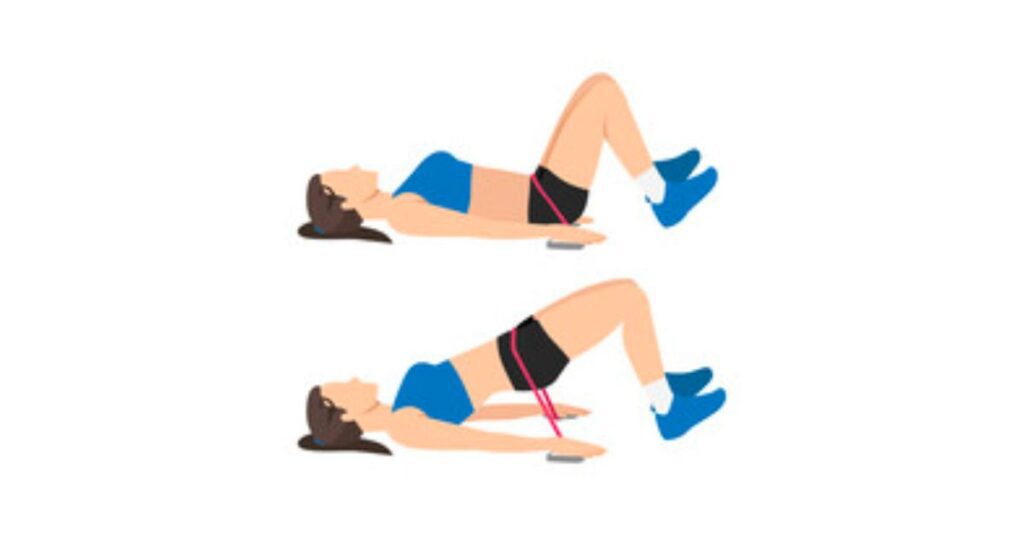
Steps:
- Lie on your back with your knees bent.
- Lift your hips, creating a straight line from shoulders to knees.
- Hold, then lower back down.
Benefits:
- Targets lower back, glutes, and hamstrings.
- May alleviate lower back pain.
9. Superman Pulses:
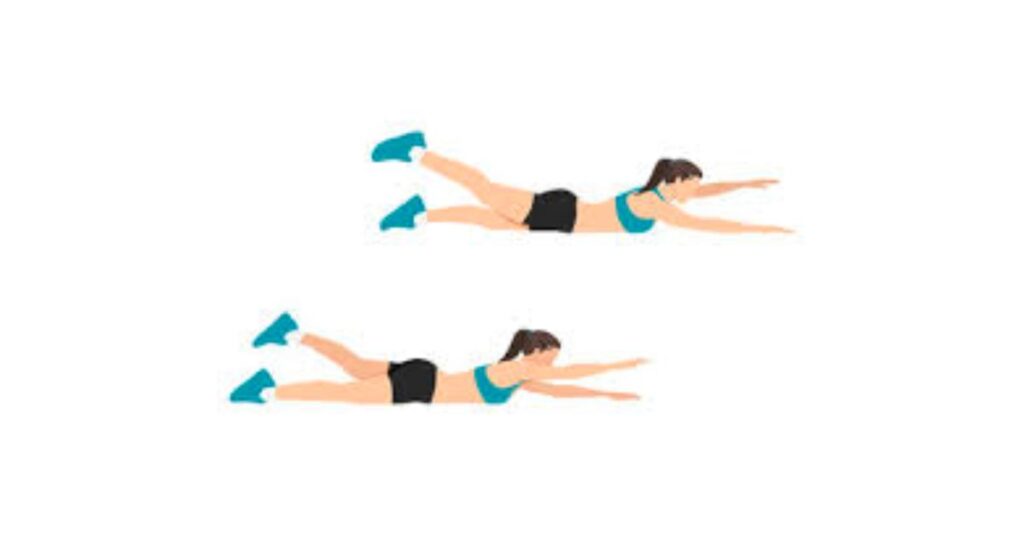
Steps:
- Similar to Superman, but add pulsing movements to intensify the exercise.
- Lift and lower your arms and legs in small, controlled motions.
Benefits:
- Increases muscular endurance in the lower back.
- Enhances stability in the core.
10. Back Extensions:
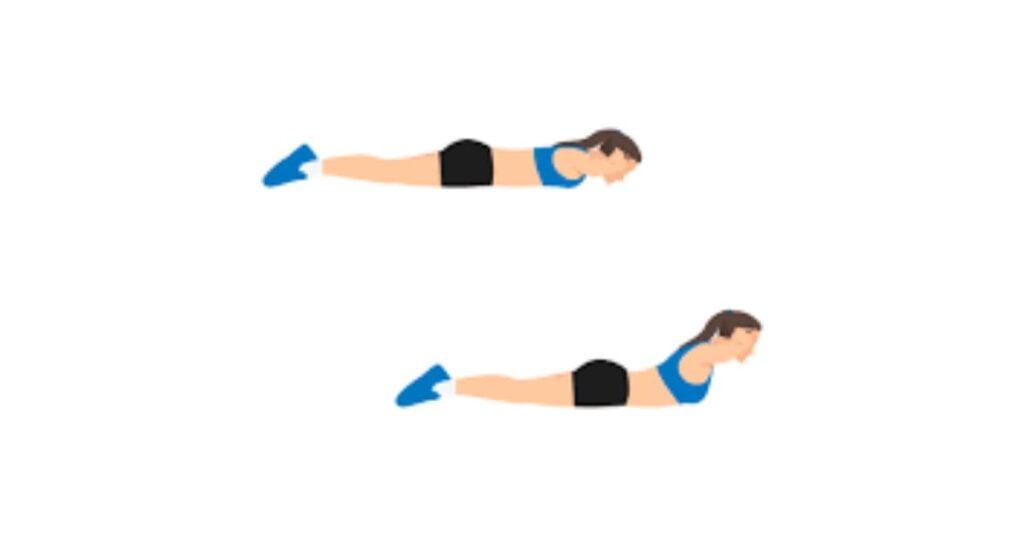
Steps:
- Lie face down with hands behind your head.
- Lift your upper body off the ground, keeping your feet anchored.
- Lower yourself back down.
Benefits:
- Focuses on strengthening the lower back.
- Can improve overall back flexibility.
11. Dolphin Kicks:
Steps:
- Start in a forearm plank position.
- Kick your legs up and down, maintaining a tight core.
- Control the motion to avoid excessive arching or bending.
Benefits:
- Targets lower back, glutes, and shoulders.
- Builds endurance in the core muscles.
12. Prone Swimmers:
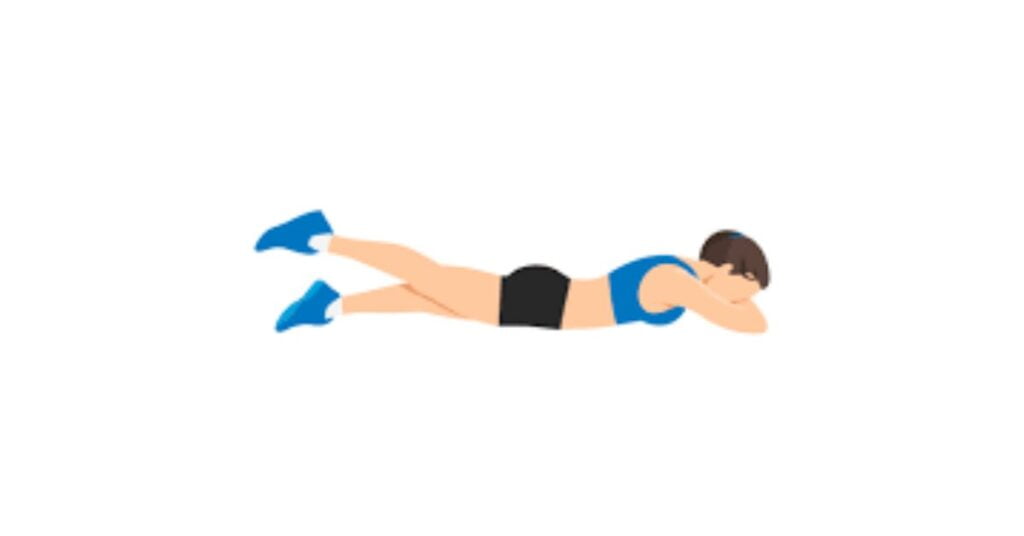
Steps:
- Lie face down, arms extended forward.
- Lift both arms and legs simultaneously, mimicking a swimming motion.
- Maintain a controlled, fluid movement.
Benefits:
- Engages various muscles in the back and shoulders.
- Enhances coordination and posture.
13. Child’s Pose:

Steps:
- Kneel on the ground, sit on your heels, and reach your arms forward.
- Rest your forehead on the floor.
- Hold and breathe deeply.
Benefits:
- Stretches and relaxes the back, particularly the lower back.
- Relieves tension and stress.
14. T-Stabilization:
Steps:
- Get into a side plank position on your forearm.
- Lift your free arm toward the ceiling, forming a “T” shape.
- Hold, then switch sides.
Benefits:
- Focuses on strengthening the obliques and lateral back muscles.
- Enhances balance and stability.
15. Wall Angels:
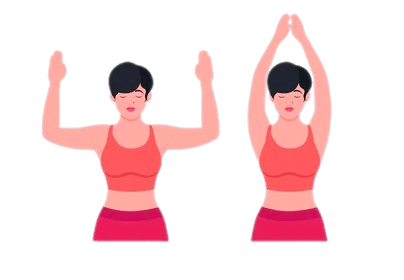
Steps:
- Stand with your back against a wall, arms bent at 90 degrees.
- Slide your arms up and down along the wall.
- Keep your back, head, and wrists in contact with the wall.
Benefits:
- Improves posture by opening up the chest and shoulders.
- Activates upper back muscles.
16. Quadruped Limb Raises:
Steps:
- Start on all fours.
- Lift one arm and the opposite leg simultaneously while maintaining balance.
- Lower them back down, then switch sides.
Benefits:
- Engages the lower back, glutes, and shoulders.
- Enhances stability and coordination.
17. Shoulder Blade Squeeze:
Steps:
- Stand or sit with your back straight.
- Squeeze your shoulder blades together as if trying to hold a pencil between them.
- Release and repeat.
Benefits:
- Targets the upper back and improves posture.
- Relieves tension from sitting at a desk for extended periods.
18. Wall Slides:
Steps:
- Stand with your back against a wall and arms bent at 90 degrees.
- Slide your arms up and down along the wall, maintaining contact.
- Focus on engaging the back muscles.
Benefits:
- Strengthens the muscles between the shoulder blades.
- Alleviates upper back and neck discomfort caused by poor posture.
19. Hollow Body Hold:

Steps:
- Lie on your back with arms extended overhead and legs lifted off the ground.
- Engage your core to lift your upper back and shoulders off the floor.
- Hold the position, keeping your lower back pressed to the ground.
Benefits:
- Intense core and lower back engagement.
- Develops stability and core strength.
20. Push-Ups:
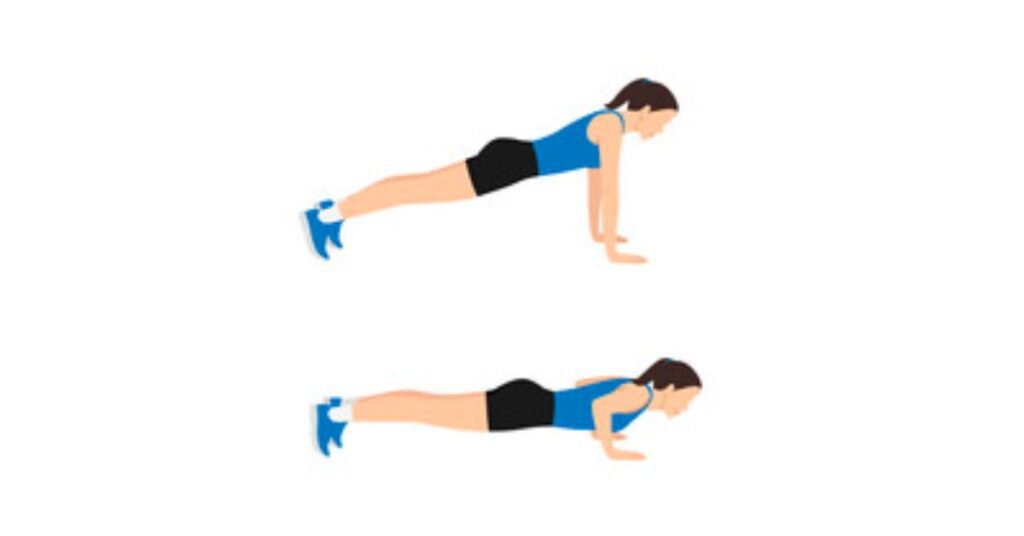
Steps:
- Assume a plank position with hands shoulder-width apart.
- Lower your body by bending your elbows, then push back up.
- Keep your core engaged and your body in a straight line.
Benefits:
- Works the chest, shoulders, and upper back.
- Enhances overall upper body strength.
21. Diamond Push-Ups:
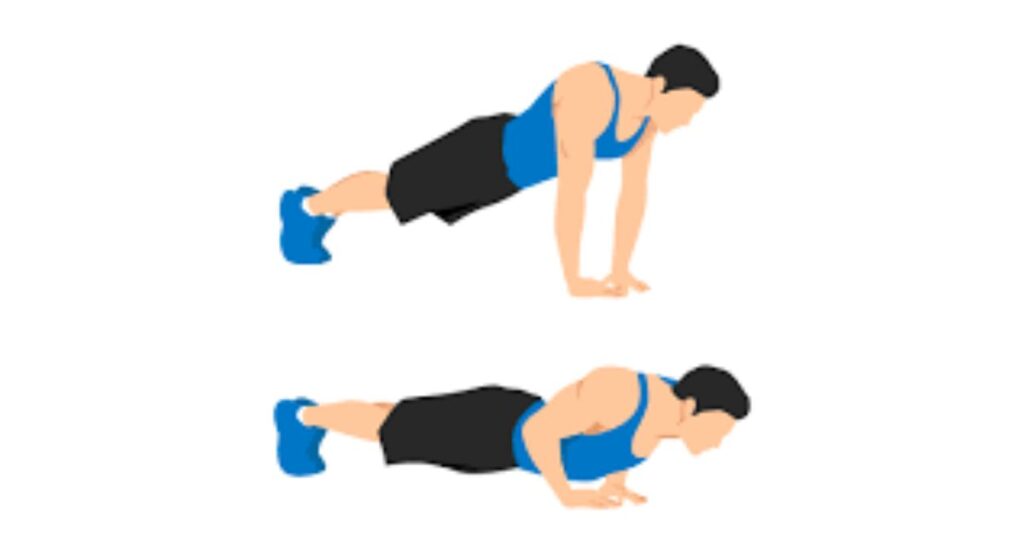
Steps:
- Place your hands close together, forming a diamond shape with your thumbs and index fingers.
- Perform push-ups with your hands positioned under your chest.
- Engages the triceps and targets the upper back.
Benefits:
- Focuses on the triceps, chest, and upper back.
- Builds strength and definition in the arms and upper body.
22. Pike Push-Ups:
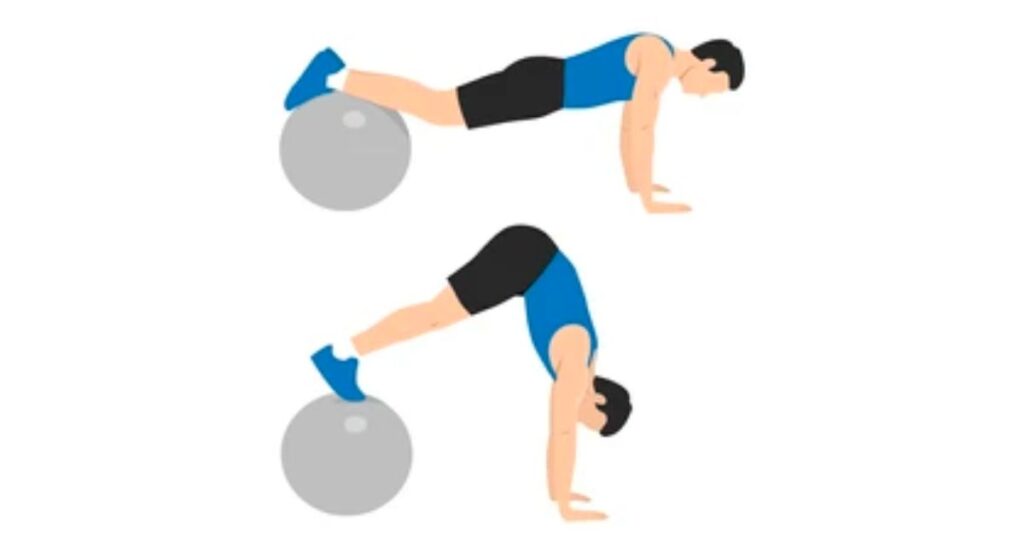
Steps:
- Start in a downward dog position with your hips lifted.
- Perform push-ups by bending your elbows and lowering your head toward the ground.
- Targets the shoulders and upper back.
Benefits:
- Strengthens the shoulders, upper back, and triceps.
- Enhances shoulder stability and mobility.
23. Wide-Grip Push-Ups:
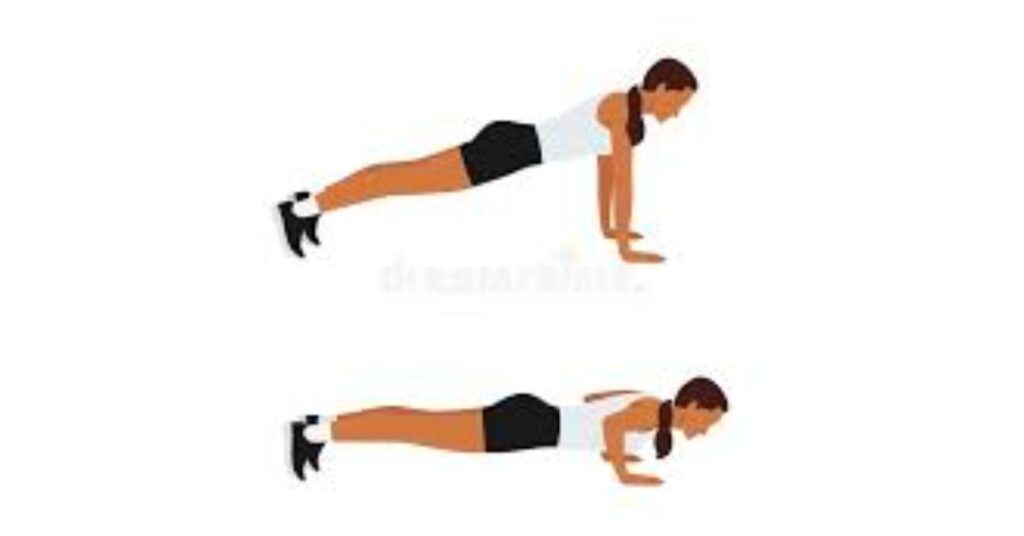
Steps:
- Place your hands wider than shoulder-width apart.
- Perform push-ups with a wider hand placement.
- Emphasizes the chest and upper back.
Benefits:
- Targets the chest, shoulders, and upper back.
- Helps broaden the chest and improve chest strength.
24. Plank to Push-Up:
Steps:
- Begin in a forearm plank position.
- Push up onto your hands, one arm at a time, into a push-up position.
- Lower back down to the forearm plank position.
Benefits:
- Engages the core, chest, and upper back.
- Enhances overall upper body strength.
25. Pull-Ups (if you have access to a pull-up bar):
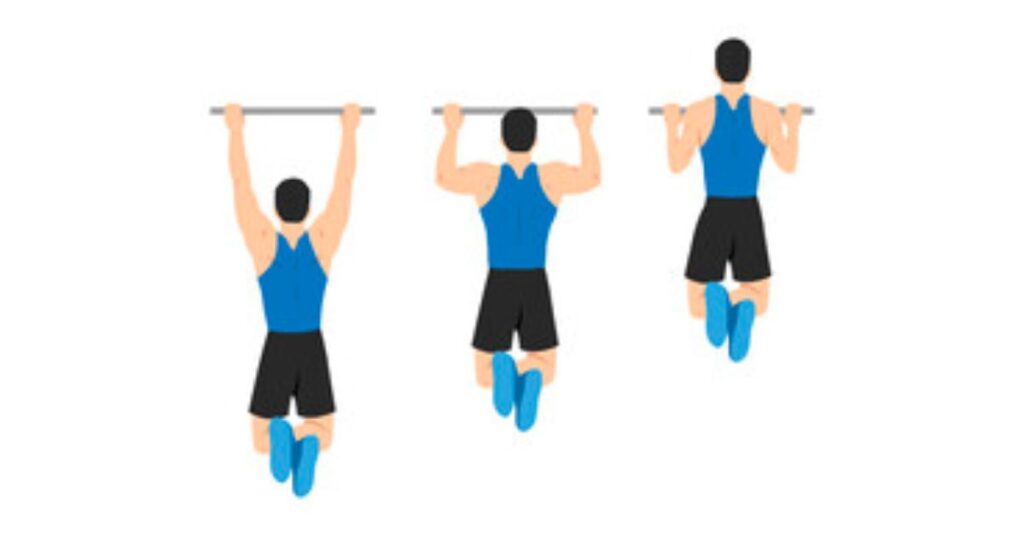
Steps:
- Hang from a pull-up bar with palms facing away from you.
- Pull your body up until your chin is over the bar, then lower down.
- Targets the entire upper back and biceps.
Benefits:
- One of the best exercises for building upper back and arm strength.
- Enhances grip strength and overall back definition.
Tips for Effective Calisthenics Back Workouts
Let’s dive into some practical tips to make your calisthenics back workouts effective, engaging, and, most importantly, fun. When it comes to building a strong and healthy back, consistency is key, and enjoying your workout makes all the difference.
1. Mix It Up: Variety is the spice of life, and it applies to calisthenics too. Don’t get stuck in a routine rut. Try different exercises to target various parts of your back. Rotate between pulling, pushing, and stabilizing movements for a well-rounded workout.
2. Perfect Your Form: Calisthenics is all about precision. Focus on maintaining proper form in every exercise. A controlled, full range of motion ensures you engage the right muscles and minimizes the risk of injury.
3. Mind-Muscle Connection: Visualize the muscles you’re working with during each exercise. Concentrate on squeezing and contracting them to maximize their activation. This mental connection can take your workouts to the next level.
4. Time Under Tension: Instead of racing through reps, slow down and increase the time your muscles spend under tension. This builds endurance and muscle strength effectively. Try a 3-4 second up and down phase for each rep.
5. Progressive Overload: To keep making gains, progressively challenge your muscles. Increase the intensity by adding reps, changing exercises, or making movements more difficult over time.
6. Control Your Breathing: Proper breathing techniques can make a significant difference. Inhale during the easier phase of an exercise and exhale during the exertion phase. Controlled breathing provides more power and stability.
7. Rest and Recovery: Your back muscles need time to recover. Don’t overtrain. Allow at least 48 hours between intense back workouts to prevent overuse injuries.
8. Record Your Progress: Keep a workout journal or use fitness apps to track your progress. Record the exercises, reps, and sets you perform. This not only motivates you but also helps you adjust your routine for better results.
9. Warm-Up Thoroughly: Never skip your warm-up. Spend 5-10 minutes doing dynamic stretches or light cardio to prepare your body for the workout ahead.
10. Flexibility Matters: Maintain flexibility in your back and shoulders. Incorporate stretching exercises like the cat-cow stretch and cobra stretch to improve your range of motion.
11. Engage Your Core: A strong core stabilizes your back during exercises. Ensure your core is engaged throughout your workout to protect your spine and optimize your performance.
12. Restorative Practices: Consider adding yoga or foam rolling to your routine. These practices can alleviate muscle soreness and improve flexibility, helping you maintain consistent workouts.
Common Mistakes to Avoid in Bodyweight Workouts
Picture this: you’re all pumped up for your bodyweight workout, but unbeknownst to you, you might be making some common mistakes that can hinder your progress. Let’s steer clear of these pitfalls:
1. Neglecting Proper Warm-Ups: Skipping warm-ups can lead to injuries and decreased performance. Take a few minutes to prepare your muscles and joints for action with dynamic stretches or light cardio.
2. Poor Form: Incorrect form can compromise the effectiveness of your workout and put unnecessary strain on your body. Focus on proper posture and controlled movements.
3. Overlooking Core Engagement: Your core muscles are the foundation of bodyweight exercises. Failing to engage them can lead to instability and back issues. Tighten your core during exercises to protect your spine.
4. Skipping Rest Days: Rest is vital for muscle recovery and growth. Overtraining can lead to burnout and injuries. Give your body the time it needs to heal and adapt.
5. Ignoring Progression: Sticking to the same workout routine for too long can lead to plateaus. Gradually increase the difficulty of your exercises to keep challenging your muscles.
6. Not Listening to Your Body: Pushing through pain or discomfort is a mistake. Pain is your body’s way of signaling a problem. If an exercise hurts, stop and assess the issue.
7. Neglecting Mobility and Flexibility: Lack of mobility and flexibility can limit your range of motion and hinder your performance. Include stretching and mobility exercises to improve your flexibility.
8. Not Incorporating Variety: Doing the same exercises repeatedly can get boring and lead to muscle imbalances. Mix it up with different bodyweight exercises to target various muscle groups.
9. Impatience: Rome wasn’t built in a day, and neither is a strong, fit body. Impatience can lead to frustration and quitting prematurely. Trust the process and stay consistent.
10. Forgetting to Cool Down: Just as warming up is essential, so is cooling down. It helps reduce muscle soreness and aids in recovery. Spend a few minutes stretching after your workout.
11. Lack of Goal Setting: Without clear fitness goals, you may lack direction and motivation. Define what you want to achieve with your bodyweight workouts and set specific, achievable goals.
12. Poor Nutrition and Hydration: What you eat and drink directly affects your performance and recovery. Fuel your body with a calisthenics balanced diet and stay hydrated to optimize your workouts.
Conclusion
In the realm of health and fitness, bodyweight workouts stand as a testament to simplicity and strength. They require nothing more than your resolve and the force of gravity.
It’s about embracing your body’s innate power and resilience.
Whether you’re a calisthenics enthusiast or new to bodyweight training, every exercise you do propels you towards a healthier you.
Challenges may arise, setbacks may occur, but in those moments of perseverance, you uncover your true potential.
As you continue this journey, keep exploring, keep pushing your limits, and keep moving. Your body holds incredible potential, and with dedication, you’ll unlock newfound strength and vitality.
Stay motivated, stay true to your goals, and embrace this empowering world of bodyweight workouts.
Your body is ready, your spirit is willing, and the path to a fitter, stronger you await. Onward, fitness warrior, and may your journey be filled with triumphs and self-belief.

